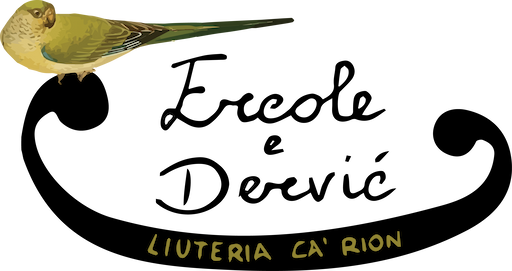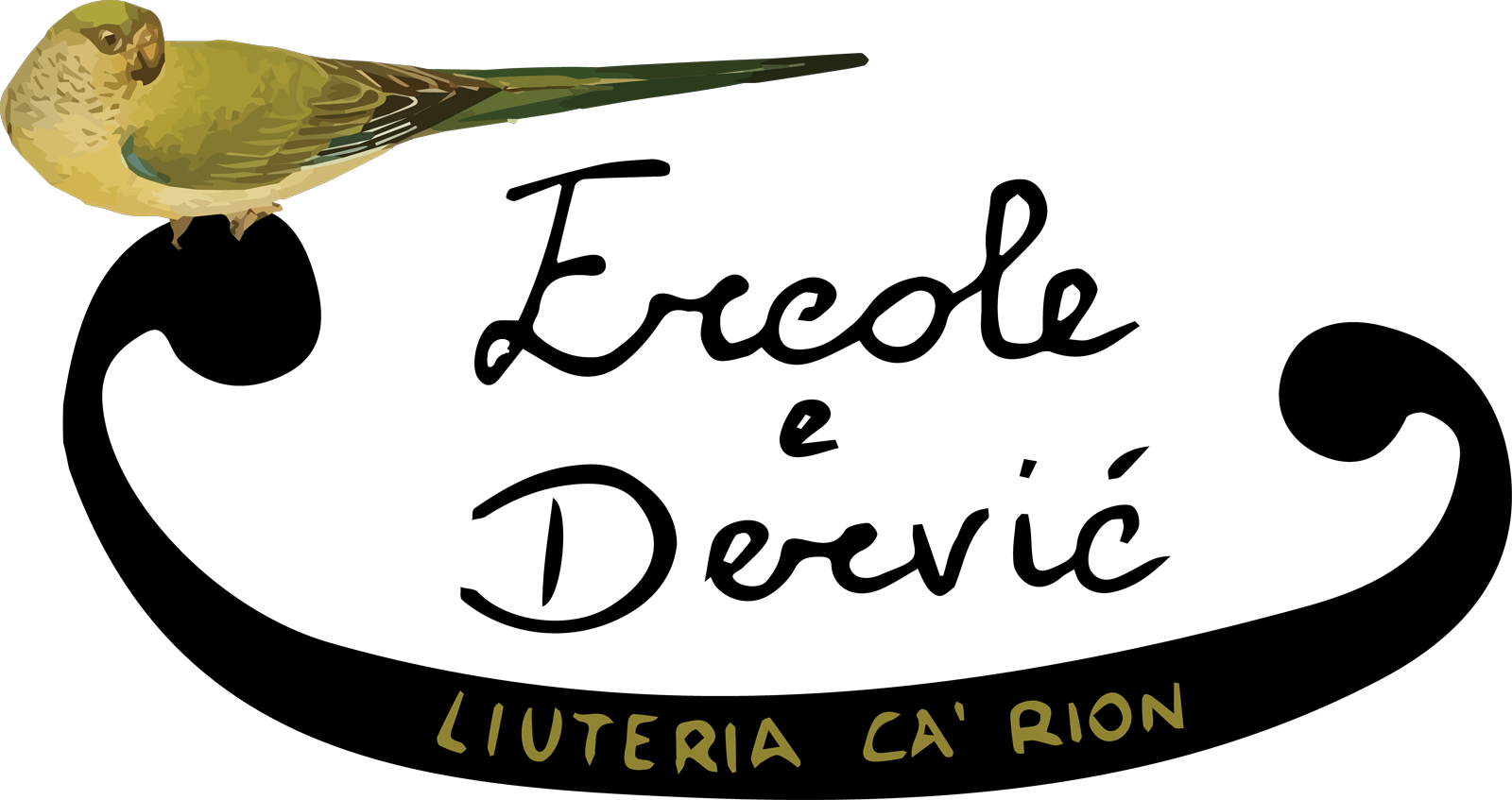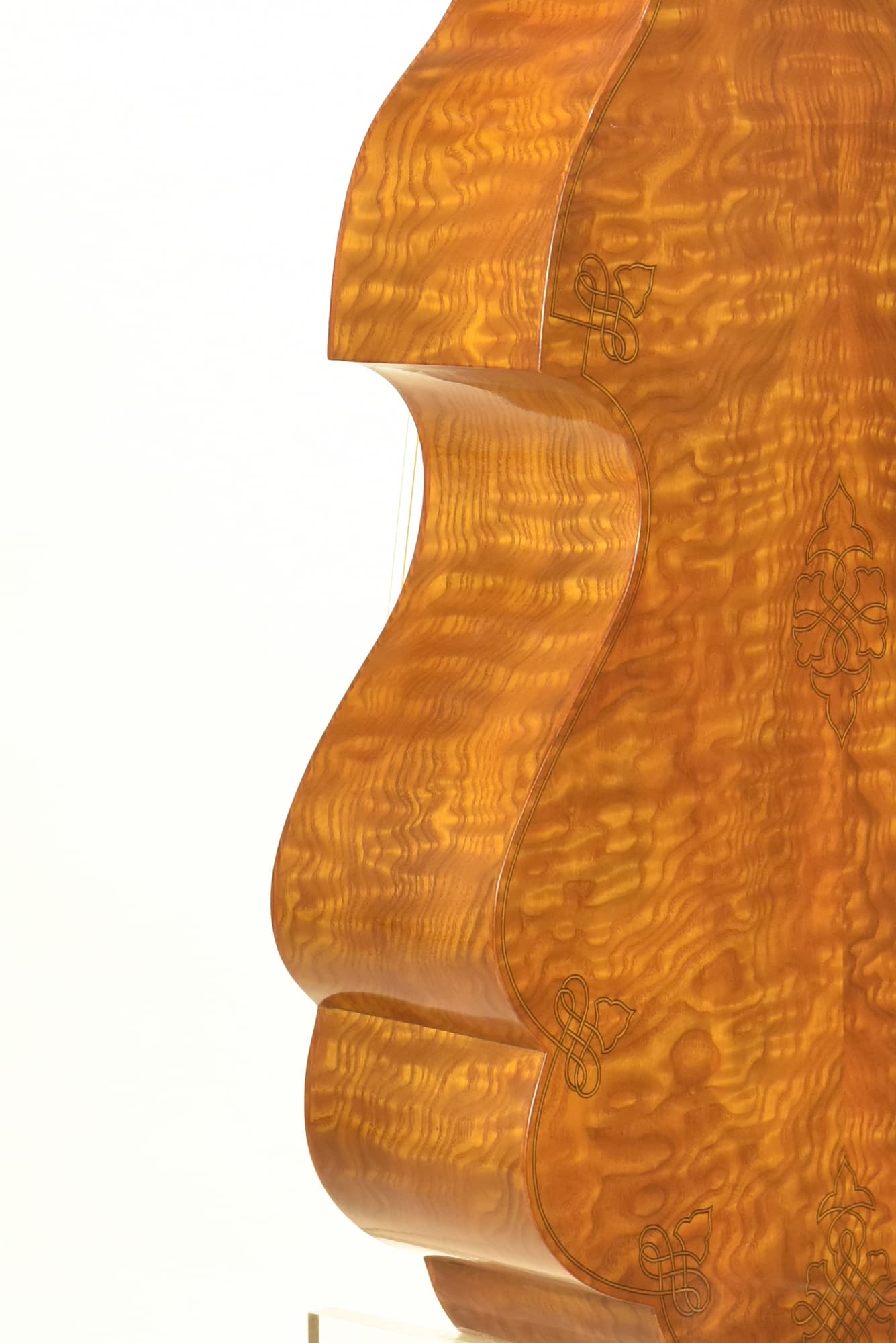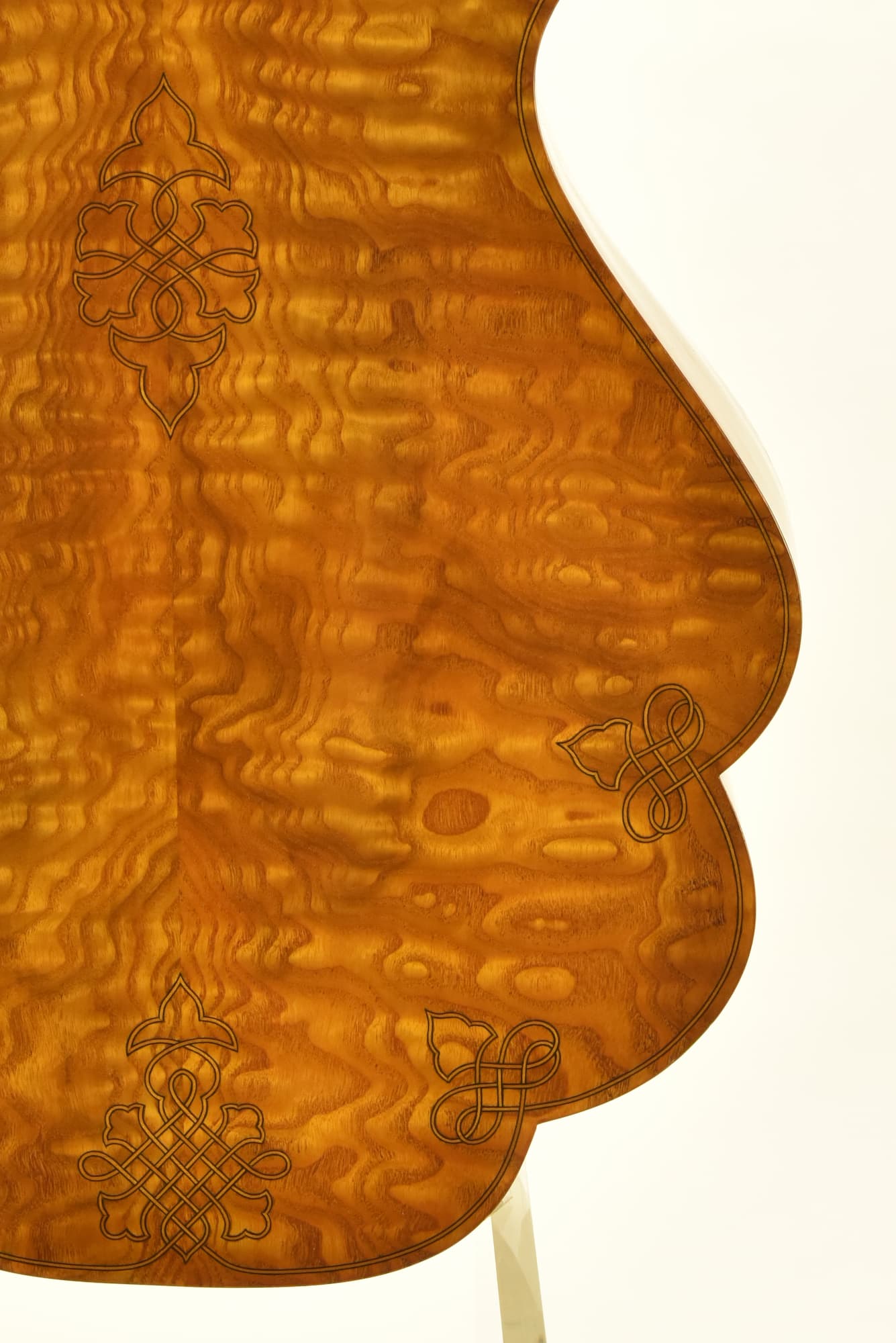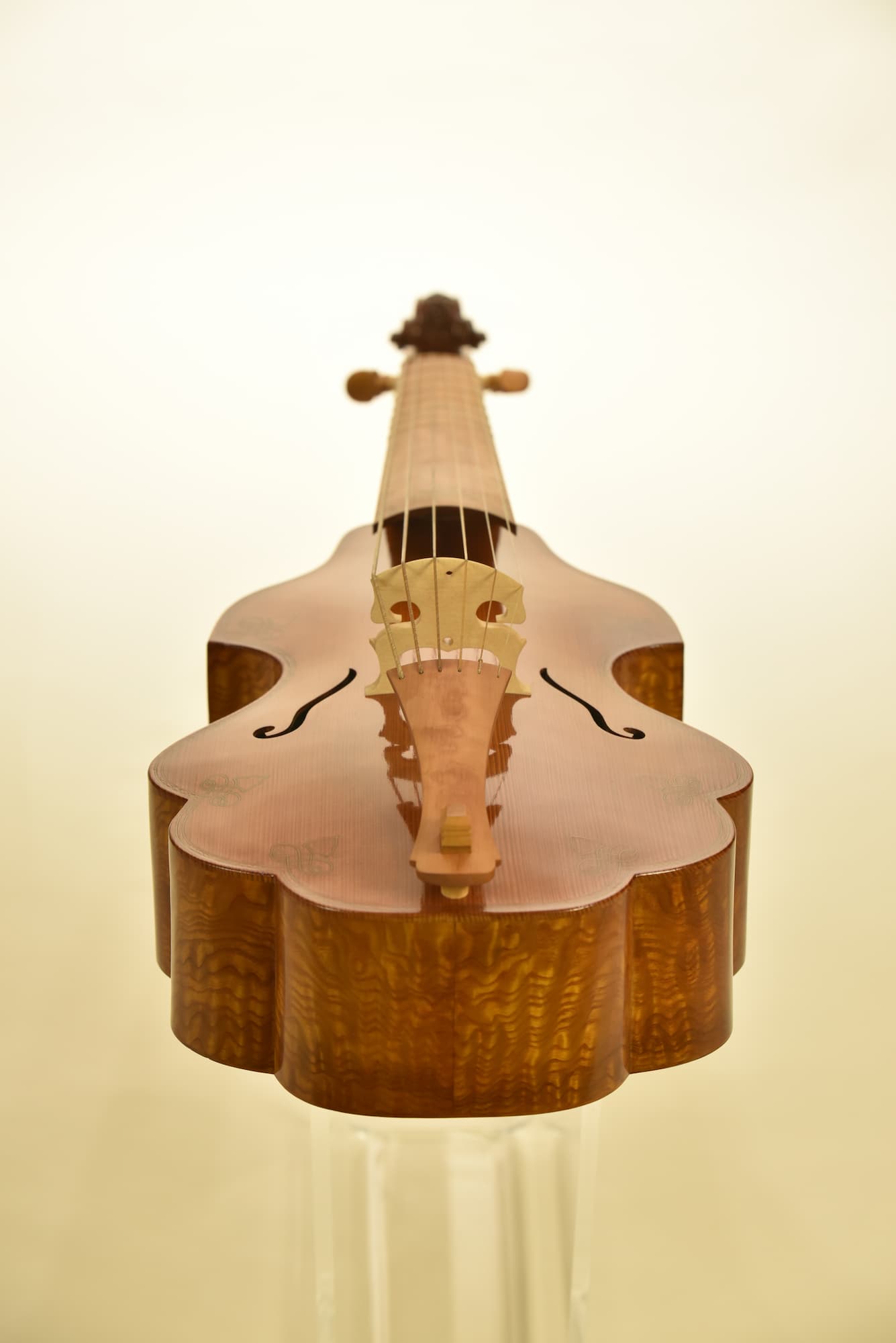Tenor viol based on model: Paul Hiltz 1656
TECHNICAL DATA
- String lenght: 560 mm
- Body lenght:492 mm
Soundboard: Val di Fiemme Spruce, carved
Back and sides: Quilted ash wood
Neck: Cherry wood
F/board and T/piece: Cherry wood and flamed pear wood
Pegs, nut and nail: Boxwood
Varnish: Oil, fossil amber based
COMMENT:
A very precious instrument, that’s what we thought the first time we saw the Hiltz’s tenor.
The original model is one of the 5 festooned viols made by Paul Hiltz in Nurnberg in 1656 (2 treble, 2 tenor and 1 bass).
The whole “consort” was made with quilted ash wood, a very particular, massively flamed wood, used also for carpentery and construction in that period.
Because of that wood the back of the instrument is entirely doubled with spruce, to ensure stability and durability.
The whole instrument is inlayed with purfilings, running through the sound board and the back they make geometrics figures and complicated square knots.
The neck is made originally with plum wood, and in this particular variation we made it with cherry wood.
The head is a carved scroll with the typical Busch-Hiltz Style sad face carved on the front, looking at the audience and reading the music with concentration and toughness.
This is one of the two instruments we photographed and measured at the Germanisches NationalMuseum of Nurnberg and of which we made technical drawings, downloadable in the “Multimedia” section of this site.
Tenor viol based on model: Paul Hiltz 1656
TECHNICAL DATA
- String lenght: 560 mm
- Body lenght:492 mm
Soundboard: Val di Fiemme Spruce, carved
Back and sides: Quilted ash wood
Neck: Cherry wood
F/board and T/piece: Cherry wood and flamed pear wood
Pegs, nut and nail: Boxwood
Varnish: Oil, fossil amber based
COMMENT:
A very precious instrument, that’s what we thought the first time we saw the Hiltz’s tenor.
The original model is one of the 5 festooned viols made by Paul Hiltz in Nurnberg in 1656 (2 treble, 2 tenor and 1 bass).
The whole “consort” was made with quilted ash wood, a very particular, massively flamed wood, used also for carpentery and construction in that period.
Because of that wood the back of the instrument is entirely doubled with spruce, to ensure stability and durability.
The whole instrument is inlayed with purfilings, running through the sound board and the back they make geometrics figures and complicated square knots.
The neck is made originally with plum wood, and in this particular variation we made it with cherry wood.
The head is a carved scroll with the typical Busch-Hiltz Style sad face carved on the front, looking at the audience and reading the music with concentration and toughness.
This is one of the two instruments we photographed and measured at the Germanisches NationalMuseum of Nurnberg and of which we made technical drawings, downloadable in the “Multimedia” section of this site.
